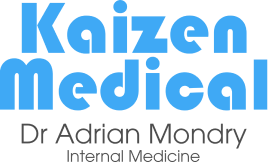Each year, flu vaccines are developed to protect against the most prevalent influenza strains. However, many people are unaware that separate vaccines exist for the Northern and Southern Hemispheres. This distinction is based on seasonal differences and evolving flu strains. This article explains why these variations exist, how they affect vaccination timing, and what factors individuals should consider.
Why Are There Different Flu Vaccines?
The need for separate flu vaccines arises from differences in seasonal flu patterns and virus evolution.
Seasonal Differences: Flu spreads more during cooler months when people gather indoors. In temperate regions, flu season peaks in winter – December to March in the Northern Hemisphere and June to September in the Southern Hemisphere. However, in tropical regions, flu transmission can occur year-round, with two peak seasons typically observed between April–June and November–January.
Virus Evolution: Influenza viruses change constantly, meaning immunity from past infections or vaccinations may not provide protection against new strains. Scientists monitor global flu activity to predict which strains are most likely to circulate.
Vaccine Updates: The World Health Organisation (WHO) evaluates flu surveillance data and makes vaccine recommendations twice a year – once for the Northern Hemisphere and once for the Southern Hemisphere. This ensures that each region’s vaccine is as relevant as possible for its upcoming flu season.
Key Differences Between Northern and Southern Hemisphere Flu Vaccines
While both vaccines aim to protect against influenza, there are differences in timing and composition.
Strain Selection Timeline: The flu strains used in the Northern Hemisphere vaccine are selected in February, while those for the Southern Hemisphere vaccine are chosen in September. This schedule ensures manufacturers have sufficient time to produce vaccines ahead of each flu season.
Vaccine Composition: Both vaccines typically protect against two influenza A strains and one or two influenza B strains. However, due to the time gap between strain selections, the two versions may include different strains depending on recent virus circulation. In some years, they may be identical, while in others, at least one strain may differ.
Timing of Administration: Northern Hemisphere countries usually administer flu vaccines between September and November, while Southern Hemisphere countries do so between March and May. In tropical regions, flu vaccination is available year-round, with recommendations often based on recent flu activity and travel plans.
Considerations for Vaccination Timing and Travel
Year-Round Flu Circulation: Unlike temperate regions, tropical areas experience flu outbreaks throughout the year. As a result, vaccination timing is flexible, and either the Northern or Southern Hemisphere vaccine may be used in some countries depending on national guidelines and recent strain activity.
Travel Considerations: Those travelling to temperate regions during their peak flu seasons, such as the US or Europe in winter or Australia in mid-year, may benefit from getting the relevant hemisphere’s flu vaccine before departure. (Always consult your doctor to determine which flu vaccine is most suitable for you, especially if you have pre-existing conditions or travel plans.)
Higher-Risk Individuals: Older adults, pregnant women, young children, and those with chronic conditions should stay updated with flu vaccination, particularly if travelling to a flu-active region.
Conclusion
Flu vaccines are tailored to the seasonal flu patterns of each hemisphere, ensuring that populations receive protection against the most likely circulating strains. In tropical regions, where flu transmission occurs year-round, individuals can benefit from flexible vaccination timing. Travellers should also consider their destination’s flu season when planning vaccinations.
Schedule a consultation with Dr Adrian Mondry to discuss the best flu vaccination timing based on your location, health needs, and travel plans.


